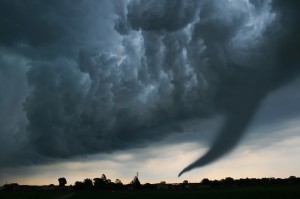Claims Handling Reminders for Oklahoma Storm Losses
C. Wesley Vines, Admitted to Practice in OK since 1983 and TX since 1990
In light of the recent devastating storms in Oklahoma, it is worth bearing in mind: (1) Oklahoma’s basic rules for interpreting insurance policies, including the “reasonable expectation doctrine,” (2) Oklahoma’s standard for determining “actual cash value,” including the “broad evidence rule,” and (3) Oklahoma’s standard of good faith and fair dealing.
 In Redcorn vs. State Farm Ins. Co., 55 P.3d 1017 (Okla. 2002), the Oklahoma Supreme Court held that an insurance policy is a contract and the same principles generally apply to the construction of a policy of insurance as apply to any adhesion contract. The parties to a contract for insurance are free to choose the risks to be covered by the policy and, once agreed upon, the parties are bound by the terms of the contract. Oklahoma courts will not rewrite those terms. The construction of a policy should be “natural and reasonable”, viewed in the light of common sense. The interpretation of an insurance contract and whether it is ambiguous is a matter of law that will be resolved by the court. Oklahoma law also recognizes “that the doctrine of reasonable expectations may be applicable to the interpretation of insurance contracts in Oklahoma, and that the doctrine may apply to ambiguous contract language or to exclusions which are masked by technical or obscure language or which are hidden in a policy’s provisions. Max True Plastering Co. v. U.S. Fid. & Guar. Co., 912 P.2d 861, 870 (Okla. 1996). The doctrine of reasonable expectations is a principle that relies on the “reasonable expectations of the insured” as a guide for insurance contract interpretation.
In Redcorn vs. State Farm Ins. Co., 55 P.3d 1017 (Okla. 2002), the Oklahoma Supreme Court held that an insurance policy is a contract and the same principles generally apply to the construction of a policy of insurance as apply to any adhesion contract. The parties to a contract for insurance are free to choose the risks to be covered by the policy and, once agreed upon, the parties are bound by the terms of the contract. Oklahoma courts will not rewrite those terms. The construction of a policy should be “natural and reasonable”, viewed in the light of common sense. The interpretation of an insurance contract and whether it is ambiguous is a matter of law that will be resolved by the court. Oklahoma law also recognizes “that the doctrine of reasonable expectations may be applicable to the interpretation of insurance contracts in Oklahoma, and that the doctrine may apply to ambiguous contract language or to exclusions which are masked by technical or obscure language or which are hidden in a policy’s provisions. Max True Plastering Co. v. U.S. Fid. & Guar. Co., 912 P.2d 861, 870 (Okla. 1996). The doctrine of reasonable expectations is a principle that relies on the “reasonable expectations of the insured” as a guide for insurance contract interpretation.
In Redcorn the Court also reaffirmed that “actual cash value” is determined by the “broad evidence rule.” The actual cash value is a question of fact to be determined by a consideration of all relevant factors and circumstances existing at the time of loss. Relevant factors include purchase price, replacement cost, appreciation or depreciation, the age of the building, the condition in which it has been maintained and market value. The Court ruled that the goal of indemnity is to place the insured in as good a condition, so far as practicable, as he would have been if no loss had occurred, and that to effectuate complete indemnity, every fact and circumstance tending to aid in formation of a correct estimate of the loss should be considered by the trier of fact. The broad evidence rule is a flexible rule that permits an appraiser, court, or jury to consider any relevant factor in determining actual cash value of damaged property.
The tort of “bad faith” was first recognized by the Oklahoma Supreme Court in Christian v. American Home Assurance Co., 577 P.2d 899, 905 (Okla. 1978). “[T]ort liability may be imposed only where…the insurer unreasonably, and in bad faith, withholds payment of the claim of its insured.” The preponderance of the evidence standard for proof of bad faith was applied in Timmons v. Royal Globe Ins. Co., 653 P.2d 907, 913 (Okla. 1982). In order for a plaintiff to recover under the tort of “bad faith” she must show by the greater weight of the evidence: (1) that the insurer was required under the insurance policy to pay the plaintiff’s claim; (2) the that the insurer’s refusal to pay the claim in full was unreasonable under the circumstances, because, for example, (i) it did not perform a proper investigation, (ii) it did not evaluate the results of the investigation properly, (iii) it had no reasonable basis for the refusal, or (iv) the amount it offered to satisfy the claim was unreasonably low; (3) the insurer did not deal fairly and in good faith with the plaintiff; and (4) the violation by the insurer of its duty of good faith and fair dealing was the direct cause of the injury sustained by the plaintiff.
Leave a Reply